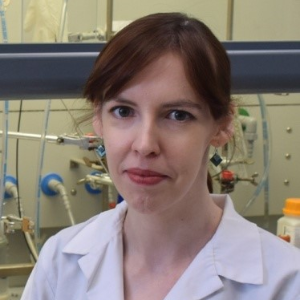Title : Synthesis and biological evaluation of novel TrxR inhibitors as anti-cancer agents
Abstract:
Cancer is a major public health problem and a leading cause of death worldwide, accounting for nearly 10 million deaths in 2020, or nearly one in six deaths.1
In spite of the existence of several approaches for the treatment of cancer it is still a challenge for the scientific community. High mortality level among cancer patients clearly points out low efficiency of chemotherapeutical drugs currently used in clinics and the desperate need to develop new and effective anti-cancer drugs with novel mechanism of action.
Elevated reactive oxygen species and antioxidant defense systems have been recognized as one of the hallmarks of cancer cells. As a major regulator of the cellular redox homeostasis, the selenoprotein thioredoxin reductase (TrxR, EC 1.8.1.9) is increasingly considered as a promising target for anticancer drug development.2,3 Inhibiting thioredoxin reductase (TrxR) to disrupt the redox equilibrium and induce tumor cell apoptosis is a significant tumor therapeutic strategy.4
Thioredoxin reductases (TrxRs) are NADPH-dependent flavoenzymes – the only known enzymes that reduce thioredoxin (Trx) from its oxidized form (Trx-S2) to reduced one (Trx-(SH)2).
TrxR1 is highly expressed in many cancer cells, therefore it is a promising target for the development of novel anticancer agents.5
Considering all mentioned above this project is devoted to the development of novel anti-cancer agents – TrxR inhibitors. The aim of this research is to obtain a series of potential TrxR derivatives and determine their biological activity.
As Michael acceptors are well known TrxR inhibitors, we decided to check if cyclic derivatives with Michael acceptor moiety as well as one more carbonyl group may serve as TrxR inhibitors.
Here we present the series of derivatives of Meldrum’s acid 1 and Barbituric acid 2 as potential TrxR inhibitors
Biological screening of all the synthesized compounds was performed (in vitro enzymatic on TrxR1).




